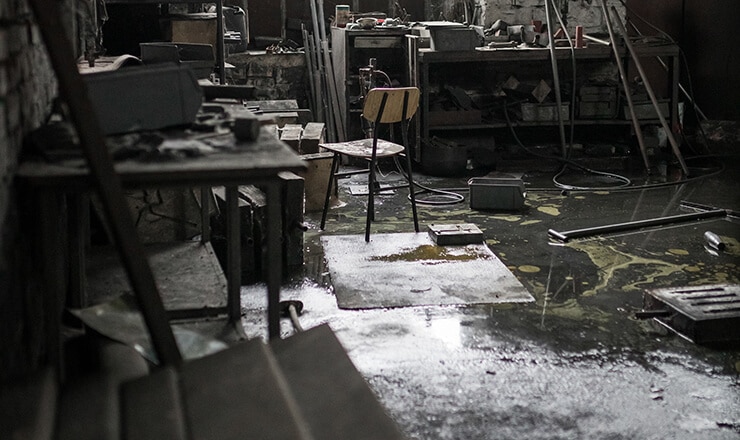Hurricanes, flash floods, or burst pipes after a freeze – you never know when water damage will occur. It frustrates the majority of homeowners and leaves them wondering, “What now?”
Selling a house with water damage is intimidating but not impossible. You have options, depending on your budget and timeline to sell.
Here are the essential steps to sell a house with flood or water damage.
Step 1: Call Your Insurance
Water damage claims put home insurance policies to use more than any other claim. Most policies cover overflow, accidental discharge, or sewer and water backup, but not flooding.
The damage has to be accidental; you could not have predicted it. Any water damage as the result of negligence or a lack in maintenance is NOT covered.
The insurance company will send an adjuster to assess damages and estimate costs to repair. You should document the loss of personal belongings and damage to your property, before or while the adjuster is there. Take plenty of photos and guestimate the value of your loss.
Collecting insurance can take several days or weeks. There is no guarantee the insurance will cover the full cost to restore your house.
If you decide to sell the property “as-is”, filing a claim may not be necessary. I recommend you discuss options with your insurance agent.
Step 2: Turn Off Utilities
No doubt you shut off the main water supply valve to stop water flow. But you also need to turn off the power because water and electricity do not mix. Same with your gas lines.
By turning off the utilities, you prevent additional damage and put yourself and professionals out of harm’s way.
Step 3: Start Water Damage Cleanup
Pump out standing water and dry the affected areas. Gather those belongings the water missed and throw out anything that is ruined. You want to do this fast because mold sets in after 24 hours.
Open windows to let in fresh air, and if a professional says it’s safe to restore power, use floor fans and dehumidifiers.
Depending on the extent of damage, and if mold is present, you might consider hiring professional water damage and restoration services. Make sure the company you hire is licensed and insured.
Step 4: Start Restoring the House
Repairs could take several months, depending on the amount of damage. Flooring and sometimes walls need to be replaced. Electrical wiring and corroded parts must be switched out. Bad plumbing needs to be changed and the spaces around them refinished.
Water and mold remediation should be done by licensed professionals. It is not the type of work you do alone, not without risks to your health or the house, or without significant loss of time.
Step 5: Disclose the Truth to Buyers
Even if damages are remediated, you must disclose water damage and mold to buyers. If you never corrected the problem, legal remedies can be pursued against you if, after closing, the buyer discovers the truth.
Disclosure requirements vary between states. Research these and maybe ask a real estate agent to explain them.
Step 6: Alternatively, Sell “As-Is” at a Lower Price or Offer Credit
If you cannot afford repairs, and want to roll the dice on the market, you have two options. You can either lower your asking price or credit the buyer to cover repairs.
The issue here is lenders have strict loan requirements, and buyers cannot secure funding to purchase a property with water damage.
Step 7: Alternatively, Sell “As-Is” to a Cash Buyer
Your best option, if you want to sell fast and without repairs, is to sell to a real estate investor. Investors pay cash for properties in any condition. It can have water damage, mold, and be full of soaked furniture and belongings.
Investors do not need an appraisal or inspection, and they skip traditional sale warranties. All closing costs and additional sale fees are covered by the investor, saving you money. All you have to do is choose the closing date.
You can close in a few months, 15 days or less, giving you plenty of time to pack up anything left untouched by the water. You enjoy a quick closing on a washed up problem property for a sure deal without getting all wet.






